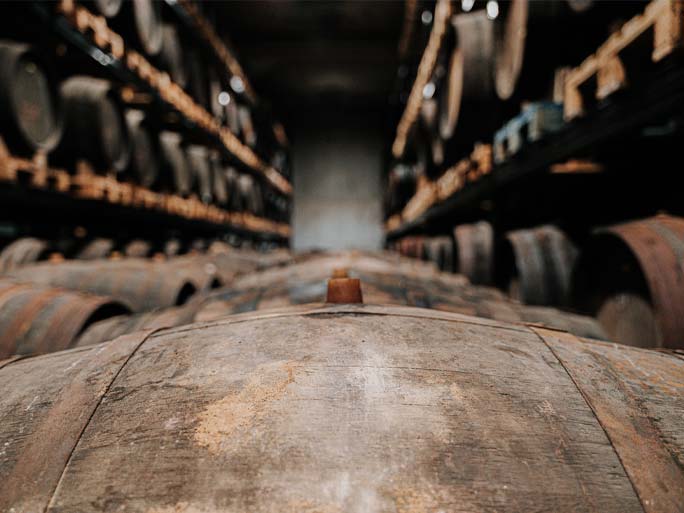Then Chairman of Canadian drinks giant Seagram’s, Edgar Bronfman was very impatient to see his new operation in action. So when he made the difficult journey to Chapeltown, Banffshire in 1974, he was in time to see the very first mash in the distillery, but too early to see a roof over the buildings! The company’s real target at the time was the illustrious brand The Glenlivet, which may explain the original name of the new venture – Braes of Glenlivet. However, in 1995 it changed its name to Braeval to avoid confusion. Nor did a distillery mothballing between 2002 and 2008 help its development.
The braes (hillsides) was a major location for illicit stills in the 18th and 19th centuries, and rumours abounded that this practice continued into relatively recent times. Certainly the remoteness of this high pasture country (Braeval shares with Dalwhinnnie the distinction of being Scotland’s highest distillery) would have made this possible. The first ‘road to the Braes’ was only laid in the 1960s.
On a site chosen for the quality of the water from Preenie & Kate’s well, and now under the ownership of Chivas Brothers, Braeval is a lighter, slightly dry malt, made possible by the upward sloping lyne arms; the copper tubes that connect the still to the condensing mechanism. This allows more of the spirit vapours that condense on the inside of the pipe to trickle back down into the body of the still, thus lightening the finished whisky.
While official single malt bottlings are a rarity, the signature notes of Braeval include a sugary biscuit nose with a nutty background, a palate of spice and ginger toffee, muted by fruity chocolate, and a vanilla/banana finish.


